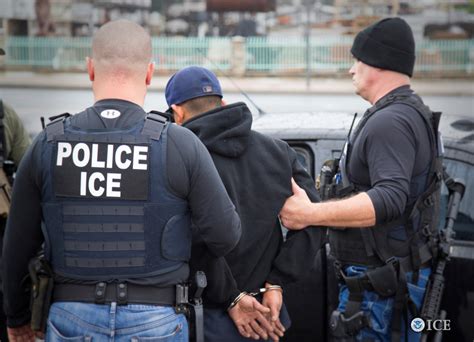
A harrowing video has surfaced showing the dramatic escape of a kidnapping and torture victim in the Bronx, New York City. The 24-year-old man, abducted on May 14th, managed to break free from his captors after enduring days of brutal confinement, providing crucial video evidence that has aided police in their investigation.
The victim, identified only as a 24-year-old male, was kidnapped and subjected to horrific abuse before his audacious escape. The New York Police Department (NYPD) is actively investigating the incident, utilizing the video footage and the victim’s testimony to identify and apprehend the perpetrators.
The ordeal began on May 14th, when the victim was forcibly taken. Over the following days, he was subjected to torture and held against his will. The details of the torture remain largely undisclosed to protect the integrity of the ongoing investigation and the victim’s privacy. However, the fact that he was able to escape despite his captivity underscores the severity of the situation.
The dramatic escape, captured on surveillance video, shows the victim desperately fleeing his captors. The video, which has been reviewed by law enforcement, provides visual evidence of the crime and is considered a critical piece of evidence in the case. The exact location of the kidnapping and the site of the victim’s captivity have not been publicly disclosed.
The NYPD is treating the case with utmost seriousness, dedicating significant resources to ensure the swift apprehension of those responsible. They have urged anyone with information related to the kidnapping to come forward and assist with the investigation.
The victim is currently receiving medical treatment and psychological support to recover from the trauma he endured. Authorities are prioritizing his well-being and providing the necessary resources to aid in his recovery.
Investigation Details and Community Impact
The NYPD’s investigation is focusing on identifying the motives behind the kidnapping and the identities of all individuals involved. Detectives are meticulously analyzing the video footage, gathering forensic evidence, and conducting interviews to piece together the events leading up to and following the abduction.
The kidnapping has understandably caused concern among residents of the Bronx. Community leaders have called for increased vigilance and cooperation with law enforcement to ensure the safety and security of the neighborhood. The NYPD has increased patrols in the area and is working closely with community organizations to address any fears or concerns.
Expert Analysis
Law enforcement experts have commented on the significance of the video evidence in the case. According to a former NYPD detective, “Video footage is invaluable in kidnapping investigations. It can provide crucial leads, identify suspects, and corroborate the victim’s account of events. In this case, the video of the victim’s escape is likely to be a key piece of evidence that will help bring the perpetrators to justice.”
Legal Ramifications
The individuals responsible for the kidnapping and torture will face severe legal consequences if apprehended. Depending on the specifics of the case, they could be charged with kidnapping, assault, torture, unlawful imprisonment, and other related crimes. The penalties for these offenses can range from lengthy prison sentences to life imprisonment, depending on the severity of the crimes and the applicable laws.
Victim Support and Resources
The victim is receiving comprehensive support from victim assistance programs and mental health professionals. These resources are crucial in helping him cope with the trauma he has experienced and rebuild his life. Support services include counseling, therapy, and assistance with legal and financial matters.
Broader Context of Kidnapping in NYC
While kidnapping cases like this are relatively rare in New York City, they are a stark reminder of the potential for violent crime. The NYPD remains vigilant in its efforts to prevent and respond to such incidents, employing a range of strategies to protect the safety and security of residents.
Further Investigation and Ongoing Efforts
The investigation into the kidnapping is ongoing, and the NYPD is committed to pursuing all available leads to bring the perpetrators to justice. They are urging anyone with information about the case to contact the NYPD Crime Stoppers hotline or submit tips online.
The successful escape of the victim is a testament to his resilience and courage. It also underscores the importance of vigilance and cooperation between law enforcement and the community in combating crime. The NYPD will continue to provide updates on the investigation as appropriate, while also respecting the privacy and well-being of the victim.
Detailed Account of the Events
On May 14th, the 24-year-old victim was abducted in the Bronx. Specific details regarding the location and manner of the abduction have not been released to avoid compromising the ongoing investigation.
During his captivity, the victim endured horrific torture and was held against his will. The exact nature of the torture has not been disclosed, but the fact that he was subjected to such treatment highlights the brutality of the crime.
Despite his ordeal, the victim managed to orchestrate a daring escape. Surveillance video captured his desperate flight from his captors, providing critical evidence that is aiding the NYPD in their investigation.
Following his escape, the victim immediately sought help and reported the kidnapping to the authorities. He is currently receiving medical treatment and psychological support to recover from the trauma he experienced.
Police Response and Investigation Strategies
The NYPD is treating the kidnapping with the utmost seriousness, dedicating significant resources to ensure the swift apprehension of the perpetrators. Detectives are meticulously analyzing the video footage, gathering forensic evidence, and conducting interviews to piece together the events leading up to and following the abduction.
The NYPD is also working closely with the community to gather information and address any concerns. They have increased patrols in the area and are urging anyone with information about the case to come forward.
Community Reactions and Concerns
The kidnapping has understandably caused concern among residents of the Bronx. Community leaders have called for increased vigilance and cooperation with law enforcement to ensure the safety and security of the neighborhood.
Residents have expressed shock and outrage at the brutality of the crime. Many have voiced concerns about the potential for similar incidents to occur in the future.
The NYPD is working to reassure the community and address their concerns. They are emphasizing the importance of reporting any suspicious activity and working together to prevent crime.
Legal and Ethical Considerations
The kidnapping and torture of the victim constitute serious violations of the law. The perpetrators will face severe legal consequences if apprehended, including charges of kidnapping, assault, torture, and unlawful imprisonment.
The case also raises ethical considerations regarding the treatment of victims of crime. It is essential that victims receive comprehensive support and assistance to help them recover from the trauma they have experienced.
Future Prevention and Safety Measures
The NYPD is committed to preventing future incidents of kidnapping and violent crime. They are employing a range of strategies, including increased patrols, targeted enforcement efforts, and community outreach programs.
The NYPD is also working to improve its response to kidnapping cases, including enhancing its investigative techniques and providing better support to victims.
Expanded Context
Kidnapping is a serious crime that can have devastating consequences for victims and their families. According to the National Center for Missing and Exploited Children, thousands of people are reported missing each year in the United States. While most missing person cases do not involve kidnapping, some do, and these cases often require extensive investigative efforts to resolve.
Kidnapping can occur for a variety of reasons, including ransom, extortion, political motives, and personal vendettas. In some cases, victims are held for days, weeks, or even months before being released or rescued.
The psychological impact of kidnapping can be profound. Victims often experience trauma, anxiety, depression, and post-traumatic stress disorder (PTSD). They may also have difficulty trusting others and forming relationships.
Support Organizations
Several organizations provide support to victims of kidnapping and their families. These organizations offer counseling, therapy, legal assistance, and other resources. Some of the leading organizations include:
- The National Center for Missing and Exploited Children (NCMEC)
- The Polly Klaas Foundation
- The Jacob Wetterling Resource Center
The Role of Media
The media plays a crucial role in reporting on kidnapping cases and raising awareness about the issue. However, it is essential that the media report responsibly and avoid sensationalizing the story. Media coverage should focus on providing accurate information and protecting the privacy of victims and their families.
Conclusion
The kidnapping and torture of the 24-year-old victim in the Bronx is a horrific crime that has shocked the community. The NYPD is committed to bringing the perpetrators to justice and ensuring the safety and security of residents. The successful escape of the victim is a testament to his resilience and courage. It also underscores the importance of vigilance and cooperation between law enforcement and the community in combating crime. The investigation remains active, and authorities are urging anyone with information to come forward. The support and resources provided to the victim are crucial in aiding his recovery from this traumatic ordeal. The incident serves as a stark reminder of the need for continued efforts to prevent and respond to kidnapping and other forms of violent crime. The focus remains on providing justice for the victim and preventing such incidents from occurring in the future.
Further Developments
As the investigation progresses, the NYPD is expected to release additional information about the case as appropriate. They are also continuing to work with community leaders to address any concerns and ensure the safety and security of the neighborhood. The ongoing efforts to apprehend the perpetrators reflect the commitment of law enforcement to protect the community and bring those responsible for this heinous crime to justice.
The case has also prompted discussions about the need for increased security measures and greater vigilance in preventing kidnapping and other violent crimes. Community members are encouraged to report any suspicious activity to the authorities and to work together to create a safer environment for all.
The resilience of the victim in escaping his captors and seeking help is an inspiring example of courage and determination. His story serves as a reminder of the importance of hope and perseverance in the face of adversity. The support and resources provided to him are essential in helping him rebuild his life and recover from the trauma he has experienced.
The kidnapping incident has had a profound impact on the community, but it has also brought people together in a shared commitment to safety and security. By working together, law enforcement, community leaders, and residents can create a stronger and more resilient community that is better equipped to prevent and respond to crime.
Mental Health and Trauma Support
The psychological impact of kidnapping and torture can be devastating, often leading to long-term mental health issues such as post-traumatic stress disorder (PTSD), anxiety, and depression. Access to comprehensive mental health support is crucial for victims to process their trauma and begin the healing process.
Specialized therapists and counselors trained in trauma-informed care can provide invaluable assistance in helping victims cope with their experiences and develop coping mechanisms. Support groups and peer networks can also offer a sense of community and understanding, allowing victims to share their stories and connect with others who have experienced similar traumas.
In addition to professional mental health services, practical support such as financial assistance, legal aid, and housing assistance can also play a vital role in helping victims rebuild their lives and regain a sense of stability and security.
The Role of Technology in Kidnapping Investigations
Technology plays an increasingly important role in kidnapping investigations, from analyzing surveillance footage to tracking cell phone signals and using social media to gather information. Law enforcement agencies rely on advanced technology to quickly identify suspects, locate victims, and gather evidence.
Facial recognition software can be used to identify individuals in video footage, while GPS tracking can help pinpoint the location of suspects and victims. Social media platforms can also provide valuable clues and insights into the motives and activities of kidnappers.
However, the use of technology in kidnapping investigations also raises important privacy concerns. Law enforcement agencies must strike a balance between using technology to solve crimes and protecting the privacy rights of individuals.
International Efforts to Combat Kidnapping
Kidnapping is a global problem that affects countries around the world. International organizations such as the United Nations and Interpol work to combat kidnapping by coordinating law enforcement efforts, sharing information, and providing technical assistance to countries that are struggling to address the issue.
International treaties and conventions also play a role in preventing and suppressing kidnapping. These agreements provide a framework for international cooperation and set standards for the prosecution of kidnappers.
The Importance of Public Awareness
Raising public awareness about the risks of kidnapping is essential for preventing future incidents. Public awareness campaigns can educate people about how to protect themselves and their families from kidnapping, as well as how to report suspicious activity to the authorities.
Schools, community organizations, and law enforcement agencies can all play a role in raising public awareness about kidnapping. By working together, they can help create a safer and more informed community.
FAQ Section
Q1: What exactly happened in this case?
A1: A 24-year-old man was kidnapped in the Bronx on May 14th and subjected to torture while held captive. He managed to escape, and the escape was captured on video. The NYPD is investigating the incident. Specific details on the nature of the torture have been withheld to protect the integrity of the investigation and the victim.
Q2: Has anyone been arrested in connection with the kidnapping?
A2: As of the latest reports, no arrests have been publicly announced. The NYPD is actively investigating the case and utilizing the video footage and the victim’s testimony to identify and apprehend the perpetrators.
Q3: What kind of support is the victim receiving?
A3: The victim is receiving medical treatment and psychological support to recover from the trauma he endured. Authorities are prioritizing his well-being and providing the necessary resources to aid in his recovery.
Q4: Is kidnapping common in New York City?
A4: While kidnapping cases like this are relatively rare in New York City, they serve as a reminder of the potential for violent crime. The NYPD remains vigilant in its efforts to prevent and respond to such incidents.
Q5: How can I help if I have information about the kidnapping?
A5: Anyone with information about the kidnapping is urged to contact the NYPD Crime Stoppers hotline or submit tips online. All information will be kept confidential.
Expanded Information on Kidnapping Statistics and Trends
While New York City enjoys relatively low rates of reported kidnappings compared to some other major metropolitan areas, it is crucial to examine broader statistics and trends to understand the context of such crimes. The FBI’s Uniform Crime Reporting (UCR) Program collects data on reported kidnappings across the United States, offering insights into the nature and prevalence of these incidents. However, it’s important to note that kidnapping statistics can be complex and underreported, as many cases go unreported to law enforcement for various reasons, including fear of retaliation or distrust of the authorities.
According to available data, the majority of reported kidnappings involve family abductions, where one parent or family member abducts a child against the wishes of the other parent. These cases often involve custody disputes and can be emotionally charged and legally complex. Non-family abductions, such as stranger abductions or those motivated by ransom or trafficking, are less common but often generate significant public concern due to their potential for violence and exploitation.
Trends in kidnapping also reflect evolving criminal tactics and technological advancements. The internet and social media have created new avenues for luring and exploiting victims, while GPS tracking and surveillance technologies can be used by both law enforcement and criminals. Analyzing these trends is essential for developing effective prevention strategies and investigative techniques.
Examining the Psychological Impact on Victims
The psychological impact of kidnapping and torture can be profound and long-lasting. Victims often experience a range of mental health challenges, including post-traumatic stress disorder (PTSD), anxiety, depression, panic attacks, and sleep disturbances. These symptoms can significantly impair their ability to function in daily life, maintain relationships, and hold down jobs.
PTSD, in particular, is a common diagnosis among kidnapping victims. It is characterized by intrusive memories, flashbacks, nightmares, and intense emotional distress triggered by reminders of the traumatic event. Victims may also experience hypervigilance, exaggerated startle responses, and emotional numbing.
The effects of trauma can also extend beyond the individual victim, impacting their families and communities. Family members may experience secondary trauma, anxiety, and grief, while communities may feel a sense of fear and vulnerability. Providing comprehensive mental health support to victims and their families is essential for promoting healing and resilience.
Delving into the Legal Framework for Kidnapping Cases
Kidnapping is a serious felony offense under both state and federal laws. The specific charges and penalties associated with kidnapping vary depending on the circumstances of the case, including the age of the victim, the duration of the abduction, the intent of the kidnapper, and whether any harm was inflicted on the victim.
In New York, kidnapping is generally classified as a Class A felony, which carries a potential sentence of life imprisonment. Aggravated kidnapping, which involves additional factors such as the use of a weapon, the infliction of serious physical injury, or the intent to demand ransom, can result in even harsher penalties.
Federal kidnapping laws also apply in certain cases, such as when the kidnapping crosses state lines or involves federal property. The Lindbergh Act, enacted in response to the kidnapping of Charles Lindbergh’s son in 1932, makes it a federal crime to transport a kidnapping victim across state lines.
The legal framework for kidnapping cases is designed to hold perpetrators accountable for their crimes and provide justice for victims. However, successful prosecution of these cases often requires extensive investigation, strong evidence, and the cooperation of witnesses and victims.
The Role of Community Involvement in Crime Prevention
Community involvement is essential for preventing and addressing crime, including kidnapping. Strong communities with active residents are more likely to be safe and resilient. Community members can play a vital role in crime prevention by reporting suspicious activity, participating in neighborhood watch programs, and supporting local law enforcement agencies.
Community organizations can also provide valuable resources and support to victims of crime and their families. These organizations can offer counseling, advocacy, and practical assistance to help victims navigate the legal system and rebuild their lives.
Building trust between law enforcement and the community is crucial for fostering cooperation and preventing crime. Law enforcement agencies should engage with community members, listen to their concerns, and work collaboratively to address crime-related issues.
By working together, law enforcement, community organizations, and residents can create safer and more vibrant communities for all.
Expanded FAQ Section
Q6: What are some signs that someone might be a victim of kidnapping?
A6: Recognizing the signs of potential kidnapping can be crucial. Some indicators include: unusual absence from regular activities, unexplained injuries, sudden changes in behavior or communication patterns, and expressions of fear or anxiety. If you suspect someone you know may be a victim, contact law enforcement immediately.
Q7: What steps can I take to protect myself and my family from kidnapping?
A7: Personal safety measures are essential. These include: being aware of your surroundings, avoiding walking alone in unsafe areas, varying your routines, keeping your phone charged, and having a safety plan with your family. Teach children about stranger danger and the importance of never going anywhere with someone they don’t know.
Q8: How does the media impact kidnapping cases?
A8: Media coverage can play a complex role. While it can raise awareness and generate public support for investigations, it can also sensationalize events, compromise ongoing investigations, and revictimize survivors. Responsible media reporting focuses on facts, respects privacy, and avoids speculation.
Q9: What resources are available for families of kidnapping victims?
A9: Several organizations offer support. The National Center for Missing and Exploited Children (NCMEC) provides resources, assistance, and advocacy for families of missing and exploited children. The Polly Klaas Foundation also offers support and resources for families of missing children. Local victim assistance programs can provide counseling, legal aid, and other services.
Q10: How are kidnapping cases investigated differently from other crimes?
A10: Kidnapping investigations often require a rapid and coordinated response. Law enforcement agencies typically mobilize specialized units, utilize advanced technology, and collaborate with other agencies to locate victims and apprehend perpetrators quickly. These investigations are often time-sensitive and require extensive resources.
This expanded article and FAQ section provide a more thorough and detailed understanding of the kidnapping case in the Bronx, incorporating various aspects of the crime, its impact, and the broader context of kidnapping incidents.









